A lunar occultation of Venus will be visible this morning,9 November, making for a wonderful spectacle.
During the occultation, the Moon will appear to hide Venus for a brief moment, before reappearing about an hour later.
The lunar occultation of Venus will begin at 09:43 UT, as viewed from the centre of the UK, with the planet reappearing at around 10:39 UT.
For more advice, read our guide on how to calculate and observe lunar occultations
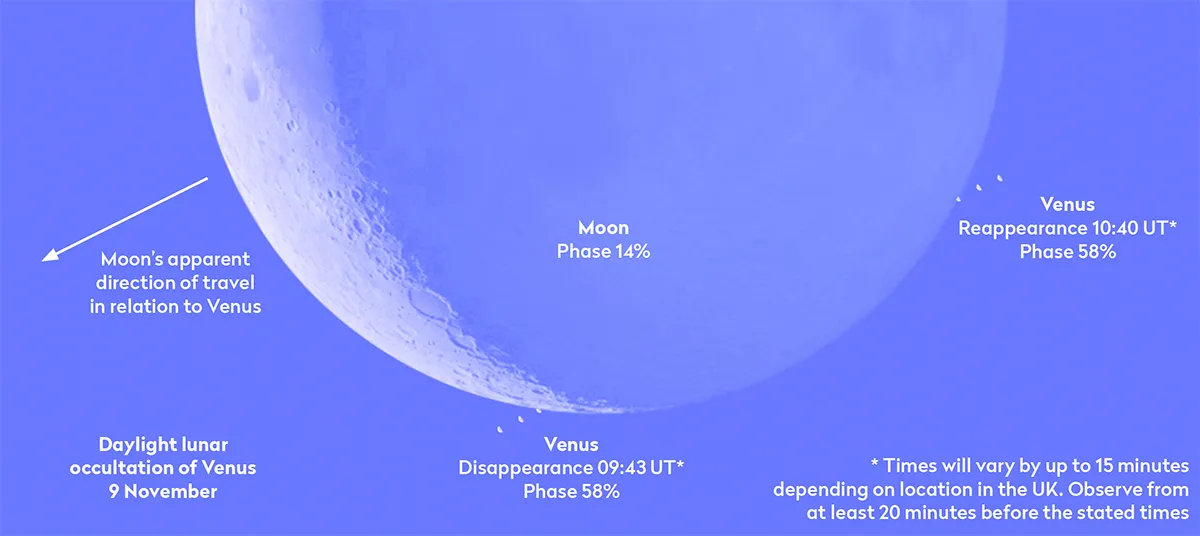
You should begin observing Venus and the Moon earlier than the time the occultation begins.
This will enable you to appreciate the full spectacle, but will also make it easier to locate both bodies as the Sun rises.
In this guide, we'll reveal everything you need to know to enjoy the lunar occultation of Venus on 9 November.
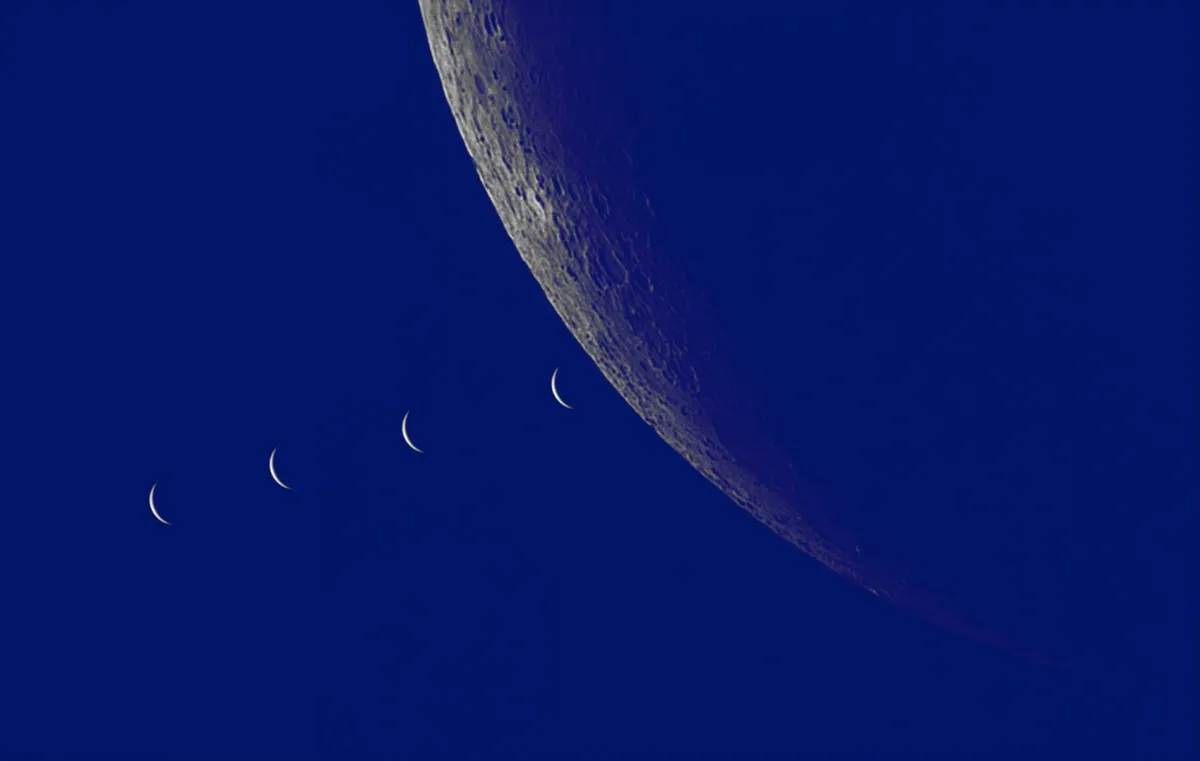
Follow Venus and the Moon
Unlike the tricky daylight lunar occultation of Jupiter in May 2023, this lunar occultation of Venus should be easier to see.
The Moon appears as a 15%-lit waning crescent on 9 November.
Venus will be just past dichotomy and showing as a 58%-lit gibbous disc, 20 arcseconds across through the telescope eyepiece.
It’ll be bright too, shining at mag. –4.2. Given clear skies, Venus will be visible to the naked eye and easy to see through binoculars.
The Moon’s separation from the Sun at occultation time will be 46°, a reasonable distance away.
However, caution must be exercised when looking for something while the Sun is above the horizon.
Observing the Sun with the naked eye or through binoculars or telescope could seriously damage your eyesight.
Ideally, place yourself in the shadow of a building or fence so that the Sun is hidden but the sky to the right of it is visible.
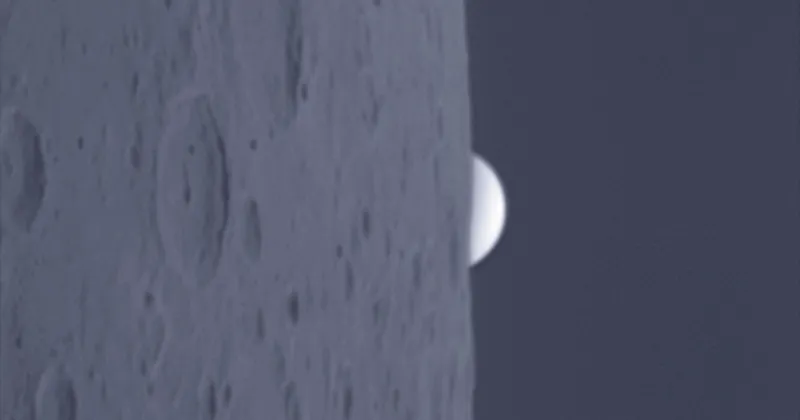
Venus and the Moon timings
On the morning of 9 November, from the UK’s centre, the Moon rises slightly ahead of Venus at 02:38 UT.
Venus appears 15 minutes later, just before 03:00 UT.
Both rise above the east point on the horizon, the Moon appearing 2.7° from Venus at this time.
If you can follow them in clear skies, over the course of a few hours the separation between the two reduces.
This produces an ever more dramatic scene against the dark morning sky, the pair gaining altitude with time.
By 05:00 UT, Venus appears 1.8° from the Moon’s centre, with both objects sitting at an altitude of around 20°.
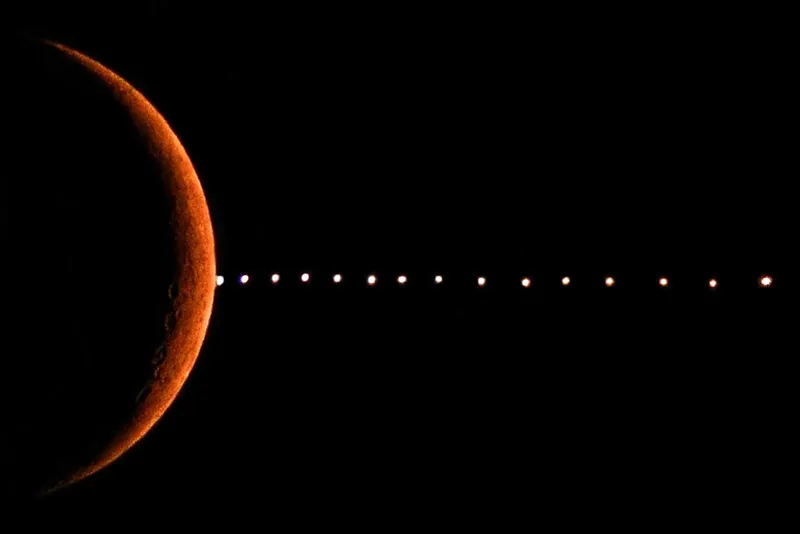
By 06:00 UT, the dawn twilight will be under way, but the sky will still be sufficiently dark to provide a dramatic, high-contrast background.
Venus will now be 1.4° from the Moon’s centre, just over a degree from the edge of the lunar crescent.
Their altitude will have increased to nearly 30° by 06:00 UT.
Sunrise occurs just before 07:30 UT, but if you’ve been following the pair up to this point they should still be easy to see.
The separation between Venus and the Moon’s centre will be fractionally less than a degree at sunrise.
This places the bright planet three-quarters of a degree from the Moon’s edge.
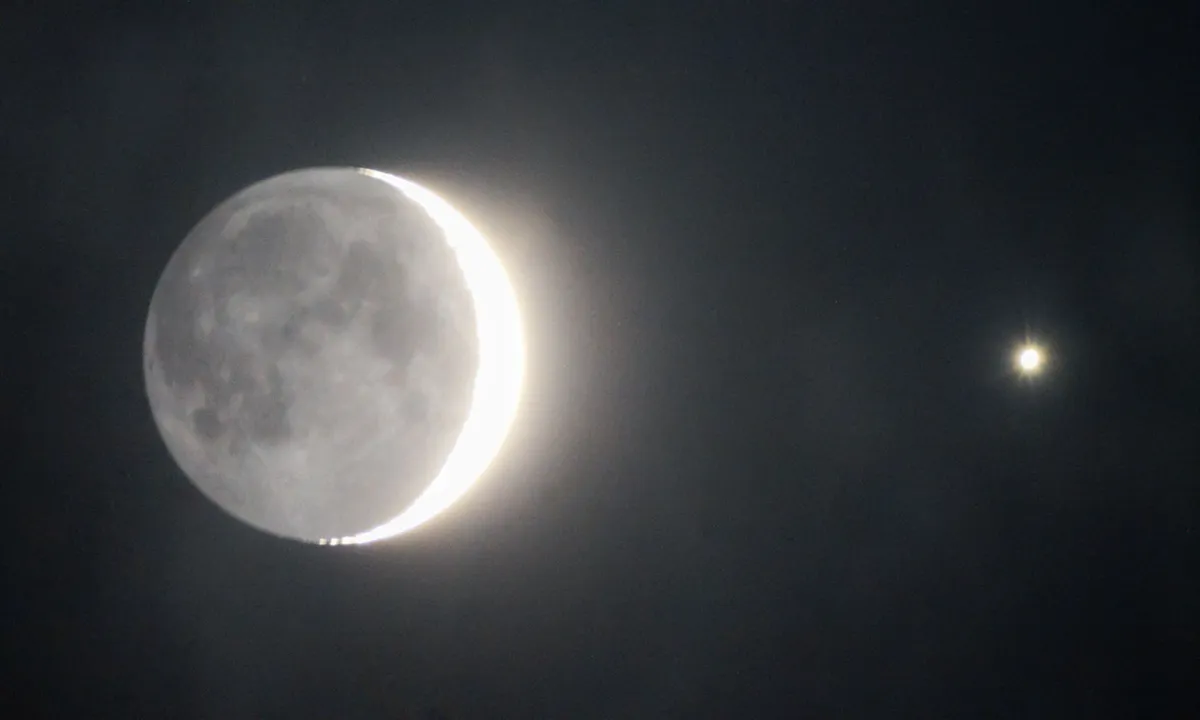
Timings for the lunar occultation of Venus
Timings for the lunar occultation of Venus vary slightly depending upon location.
Viewed from the centre of the UK, the Moon’s bright limb hides Venus at 09:43 UT.
Venus reappears from behind the dark limb almost an hour later at around 10:39 UT.
Those living in the south of the UK get the shortest occultation; those living in the north get the longest.
Venus occultation video guide
Find out more about the lunar occultation of Venus as part of our November 2023 Virtual Planetarium.
Did you observe or photograph the lunar occultation of Venus? Let us know how you got on by emailing contactus@skyatnightmagazine.com.

